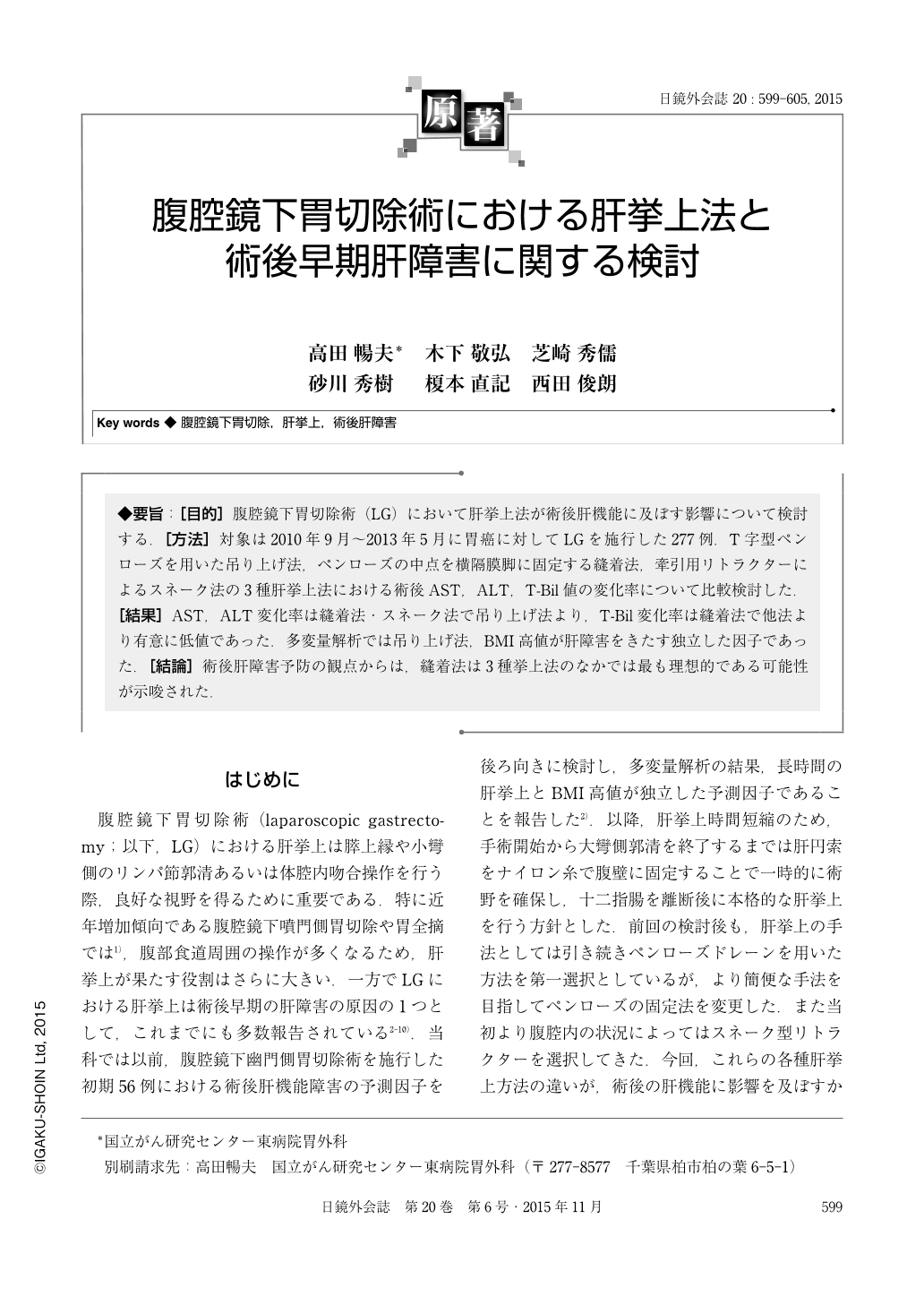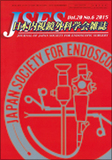Japanese
English
- 有料閲覧
- Abstract 文献概要
- 1ページ目 Look Inside
- 参考文献 Reference
◆要旨:[目的]腹腔鏡下胃切除術(LG)において肝挙上法が術後肝機能に及ぼす影響について検討する.[方法]対象は2010年9月〜2013年5月に胃癌に対してLGを施行した277例.T字型ペンローズを用いた吊り上げ法,ペンローズの中点を横隔膜脚に固定する縫着法,牽引用リトラクターによるスネーク法の3種肝挙上法における術後AST,ALT,T-Bil値の変化率について比較検討した.[結果]AST,ALT変化率は縫着法・スネーク法で吊り上げ法より,T-Bil変化率は縫着法で他法より有意に低値であった.多変量解析では吊り上げ法,BMI高値が肝障害をきたす独立した因子であった.[結論]術後肝障害予防の観点からは,縫着法は3種挙上法のなかでは最も理想的である可能性が示唆された.
[Purpose] The aim of this study is to evaluate the relation between liver retraction methods and early postoperative liver dysfunction in laparoscopic gastrectomy. [Patients and Methods] Clinical data of 277 patients, who underwent laparoscopic gastrectomy for gastric cancer from September 2010 to May 2013, were retrospectively reviewed for analysis. Liver retraction was performed in one of the following ways : hanging method(hang up the liver by a T-shaped Penrose drain), suture-fixed method(fixed a Penrose drain to the diaphragmatic crus using a suture at its middle point), or snake retractor method. We analyzed postoperative changes of the serum AST, ALT and T-Bil as parameters indicating liver dysfunction. Multivariable analysis was also conducted to clarify the specific factors related with postoperative liver dysfunction. [Result] The increase rates of AST and ALT were significantly lower in suture-fixed method and snake retractor method than in hanging method. The increase rate of T-Bil was significantly lower in suture-fixed method than in other two methods. Multivariable analysis revealed that hanging method and high BMI were independent predictive factors for liver dysfunction. [Conclusion] From a viewpoint to prevent postoperative liver dysfunction, our results indicate that suture-fixed method is an ideal method at present.

Copyright © 2015, JAPAN SOCIETY FOR ENDOSCOPIC SURGERY All rights reserved.


